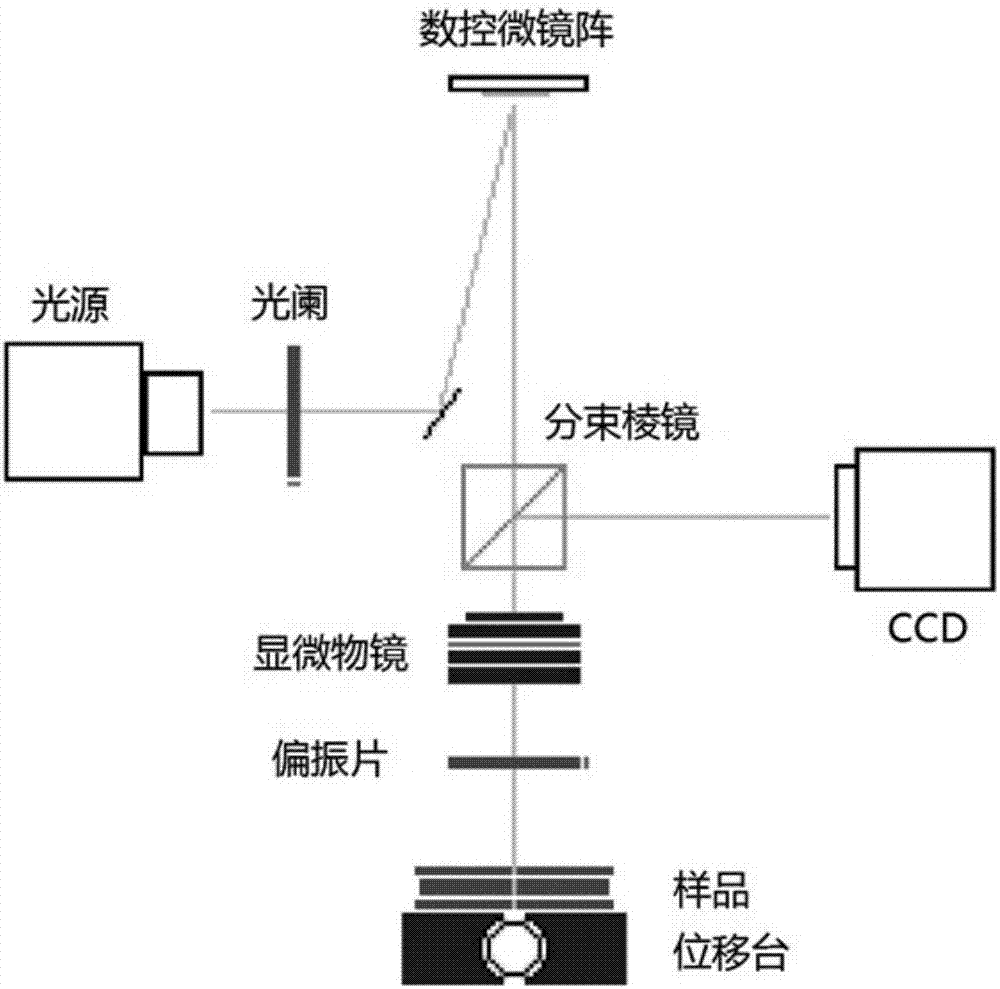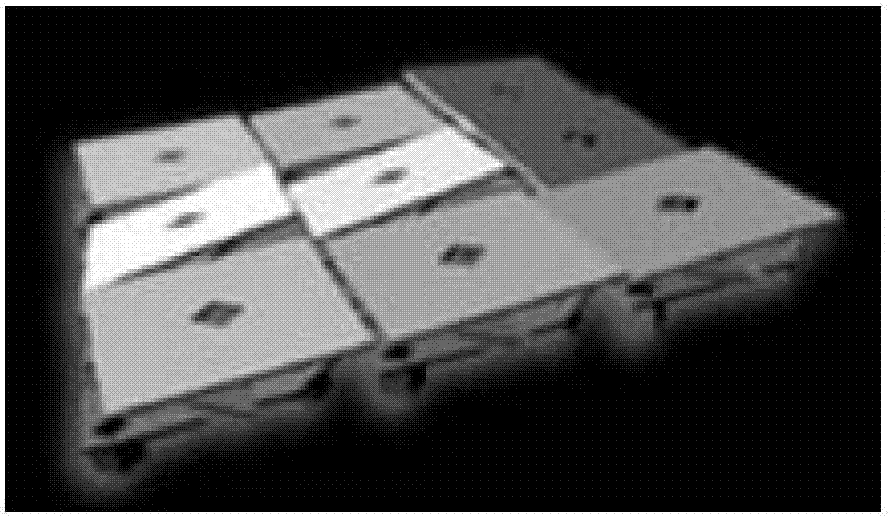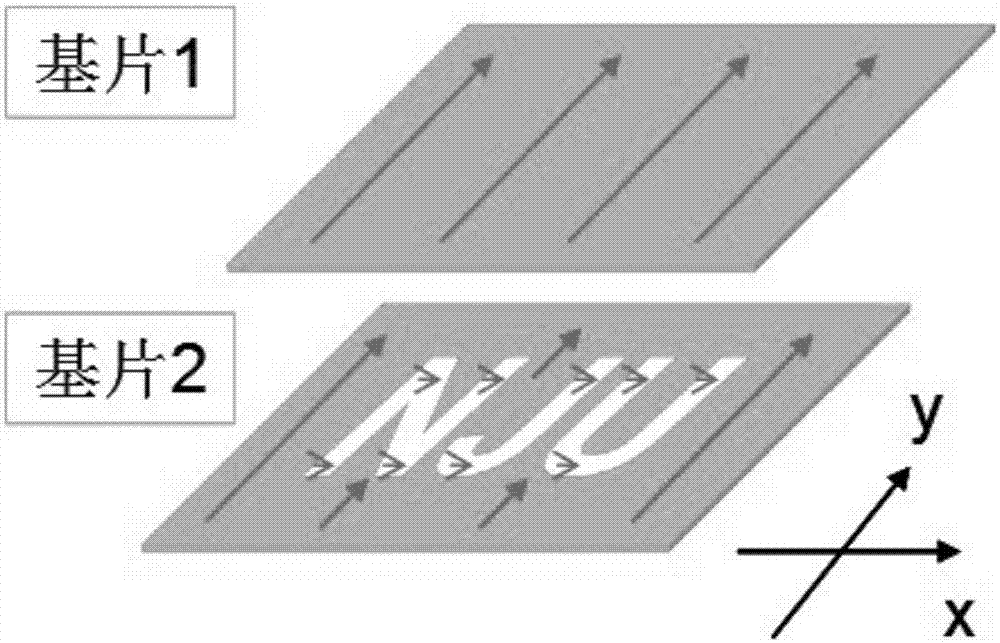Photo-control liquid crystal spatial light modulator and application thereof
A technology of spatial light modulator and liquid crystal, which is applied in the fields of instruments, optics, nonlinear optics, etc., can solve the problems of commercial spatial light modulators such as high price, reduced beam quality and efficiency, and serious stray light, so as to save production cost, Less stray light and better beam quality
- Summary
- Abstract
- Description
- Claims
- Application Information
AI Technical Summary
Problems solved by technology
Method used
Image
Examples
Embodiment 1
[0047] The optically controlled liquid crystal spatial light modulator realizes the optically controlled orientation of liquid crystal selection.
[0048] Cut the ITO glass to a suitable size, dry it after ultrasonic cleaning, and perform UVO cleaning to increase the wettability and adhesion between the surface and the photo-alignment material. The azo-based photo-alignment material SD1 was spin-coated on the substrate, and dried on a hot stage to form a film.
[0049] Expose through a polarizer with a blue 405nm LED (5J / cm 2 ), a uniform initial orientation is obtained on both sheets.
[0050] Then, place one of the substrates on the focal plane of the DMD exposure system. Select the pattern that needs to be exposed, output it to the DMD surface with a computer, and adjust the polarization direction of the polarizer to be perpendicular to the original exposure direction, and expose again (5J / cm 2 ). The orientation direction of the double exposed areas will be perpendicul...
Embodiment 2
[0054] The generation and detection of liquid crystal Airy templates and Airy beams are formed by using optically controlled liquid crystal spatial light modulators.
[0055] The previous exposure steps are the same as in Example 1, the difference is that the two pieces of glass sheets exposed for the first time are glued into a box, and then taken to the DMD system for secondary exposure of the Airy template pattern, such as Figure 5 (a) shown. The direction of the secondary exposure is perpendicular to the direction of the primary exposure. The method of making the box and filling the liquid crystal is the same as that of Embodiment 1. Under this method, the liquid crystal molecules in the re-exposed area and the non-re-exposed area in the liquid crystal cell are in parallel PA orientation, but the two orientations are orthogonal to each other. The advantage of this arrangement of liquid crystal molecules is that the diffraction spots and diffraction efficiency produced b...
Embodiment 3
[0057] In this embodiment, a one-dimensional polarization grating is formed by using an optically controlled liquid crystal spatial light modulator.
[0058] In this embodiment, two ITO glass sheets that were spin-coated with a photoalignment agent and formed into a film were first prepared into a box, and the empty box was placed in a DMD dynamic micro-exposure system for exposure. Since the orientation of the liquid crystal of the polarization grating is distributed periodically and continuously and gradually, and the orientation of the cell is consistent from top to bottom, such as Figure 6 As shown in (a), the liquid crystal orientation changes from zero to 180°. Segment the director simulation map, and only expose a part of the area each time. The next exposure area is the position after the previous exposure has been shifted by a certain distance. The two exposure areas overlap, and the total dose of multiple exposures is enough to make The photoalignment agent reaches...
PUM
 Login to View More
Login to View More Abstract
Description
Claims
Application Information
 Login to View More
Login to View More - R&D
- Intellectual Property
- Life Sciences
- Materials
- Tech Scout
- Unparalleled Data Quality
- Higher Quality Content
- 60% Fewer Hallucinations
Browse by: Latest US Patents, China's latest patents, Technical Efficacy Thesaurus, Application Domain, Technology Topic, Popular Technical Reports.
© 2025 PatSnap. All rights reserved.Legal|Privacy policy|Modern Slavery Act Transparency Statement|Sitemap|About US| Contact US: help@patsnap.com



